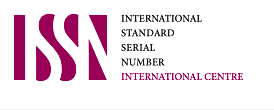EXPERIENCES OF WORKPLACE BULLYING IN WOMEN WORKER
Abstract
This qualitative study aims to describe the experiences of Workplace Bullying in women worker. Workplace Bullying is an act of violence in the work environment, which involves verbal abuse, threats, ostracism, insults, isolation, eliminating opportunities, insinuating, giving harsh criticism, and interfering in other people's personal affairs. Workplace Bullying cause psychologically and physiologically problems. In this study, the subjects were 3 women who were still actively working at PT X. The interview technique used semi-structured using interview guidelines. The result of this study founds several themes and units of analysis, including factors that cause workplace bullying, who are the bullies, forms of workplace bullying, impacts that received by participants, the reasons why participants persist, the support they received, and about their hopes. It is hoped that this research can become a reference for policy makers to take preventive actions that can minimize the occurrence of workplace bullying.
Keywords: workplace, bullying, women, worker
Keywords
Full Text:
PDFReferences
Aluedse, O. (2006). Bullying in schools: A form of child abuse in schools. Educational research quarterly, 30(1), 37-49.
Creswell, John W (2009); Research Design; Qualitative, Quantitative and Mixed Methods Approaches, Sage, Los Angeles.
Dita, Prima Nesya. (2014). “Peranan Dukungan Organisasi Dan Bullying Di Tempat Kerja Terhadap Komitmen Karyawan Pada Organisasi”. Tesis. Magister Psikologi Profesi Fakultas Psikologi Universitas Sumatera Utara.
Fithria dkk. (2016). “Faktor - Faktor Yang Berhubungan Dengan Perilaku Bullying”. Vol. 07, No.3.
Frieda (2012). Katakan tidak untuk bullying. Diakses pada 28 April 2014 dari http://m.suaramerdeka.com/index.php/read/wanita/2012/12/17/1398
Gunawan, R., Prihanto, S., & Yuwanto, L. (2009). Causes and The Intensity of Workplace Bullying. Anima, Indonesian Psychology Journal, 25 (1): 47-54.
Hoel, H., Zapf, D., & Cooper, C. L. (2002). Workplace bullying and stress. In Historical and current perspectives on stress and health (pp. 293-333). Emerald Group Publishing Limited.
Lilik, H. (2016). “Pembulian di Tempat Kerja Dalam Konteks Asia”. Seminar Nasional dan Gelar Produk. 17 – 18 Oktober 2016.
McDonald, D. N., Brown, E. D., & Smith, K. F. (2015). Workplace bullying: A review of its impact on businesses, employees, and the law. International Journal of Business and Social Science, 6(2).
Michael U, Patrick R, dan Gerry C. (2014). School Based Interventions to Enhance the Resilience of Students. Journal of Educational and Developmental Psychology, Vol. 4, No. 1.
Noviana Dewi, E. (2016). Resiliensi Anak Korban Bullying Di Sekolah (Doctoral dissertation, Universitas Muhammadiyah Surakarta).
Putri, D. I. R. (2018). Workplace bullying pada karyawan baru (Doctoral dissertation, UIN Sunan Ampel Surabaya).
Rakhmat, J. (2007). Psikologi komunikasi. Bandung: PT. Remaja Rosda Karya.
Rudi, T. (2010). Informasi perihal bullying. Diperoleh dari https://bigloveadagio. files.wordpress.com/2010/03/informasi_perihal_bullying.pdf
Samnani, A. K. (2012). 20 Years of workplace bullying research: A review of the antecedents and consequences of bullying in the workplace. Aggression and Violent Behavior. 17(6), 581-589. doi: 10. 1016/j.avb.2012.08.004 Santrock, J.W. (2007). Adolescence: Perkembangan Remaja Edisi Kesebelas.
Shangar, U., Yazdanifard, R., & Rupini (2014). Workplace Bullying; Boundary for Employees and Organizational Development.
Shaw, T., dkk. (2013). The Forms of Bullying Scale (FBS): Validity and reliability estimates for a measure of bullying victimization and perpetration in adolescence. Psychological assessment, 25(4), 1045.
Silviandari, I. A., & Helmi, A. F. (2018). Bullying di Tempat Kerja di Indonesia. Buletin Psikologi, 26, 137-145.
Sugiyono. (2018). Metode penelitian Kualitatif. Bandung: Alfabeta.
Sukarti, S., Kurniawan, K., & Mulawarman, M. (2018). Mengurangi Bullying Verbal melalui Konseling Kelompok dengan Teknik Kontrak Perilaku. 89 Indonesian Journal of Guidance and Counseling: Theory and Application, 7(1) 52.59
Workplace Bullying Institute. (2017). U.S workplace bullying survey: National prevalence. https://www.workplace- bullying.org/wbiresearch/wbi-2017- survey/
Yeow, J. A., Chin, T. S., Ng, P. K., & Yong, W. Y. (2010). The Causes of Workplace Bully in SMEs. In Global Conference on SME and Enterpreunership (pp. 1-8).
DOI: http://dx.doi.org/10.22441/biopsikososial.v8i1.20067
Refbacks
- There are currently no refbacks.
Copyright (c) 2024 Biopsikososial: Jurnal Ilmiah Psikologi Fakultas Psikologi Universitas Mercubuana Jakarta
JBUMBand its articles is licensed under a Creative Commons Attribution-ShareAlike 4.0 International License.
Tim Editorial Office
JBUMB
Fakultas Psikologi, Universitas Mercu Buana
Jalan Meruya Selatan No. 1, Kembangan, Jakarta Barat, 11650, Indonesia
Phone: +6281318855243
Email: [email protected]
Website: https://publikasi.mercubuana.ac.id/index.php/biopsikososial/index

















